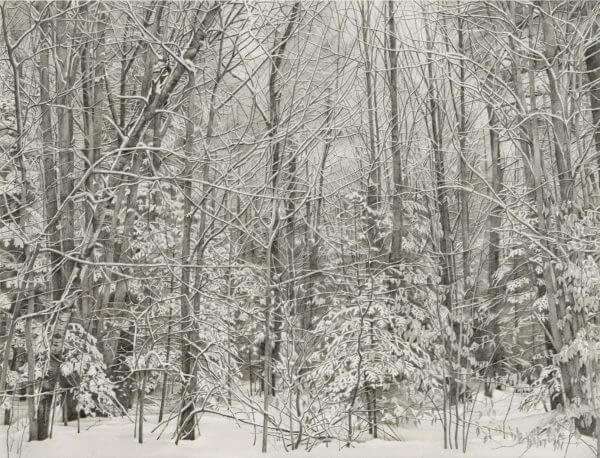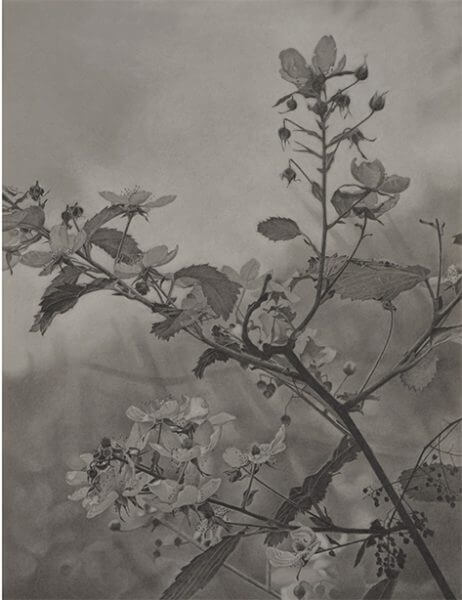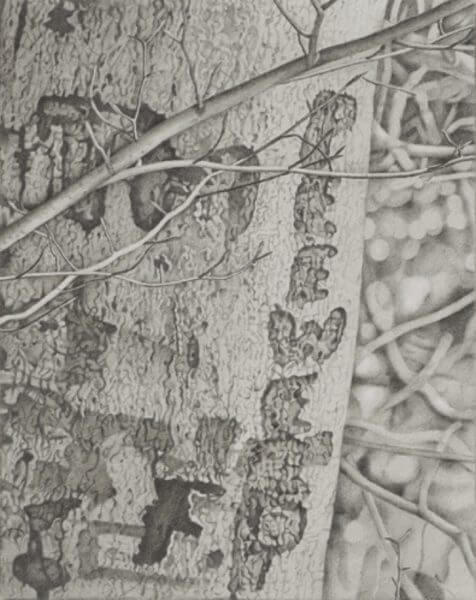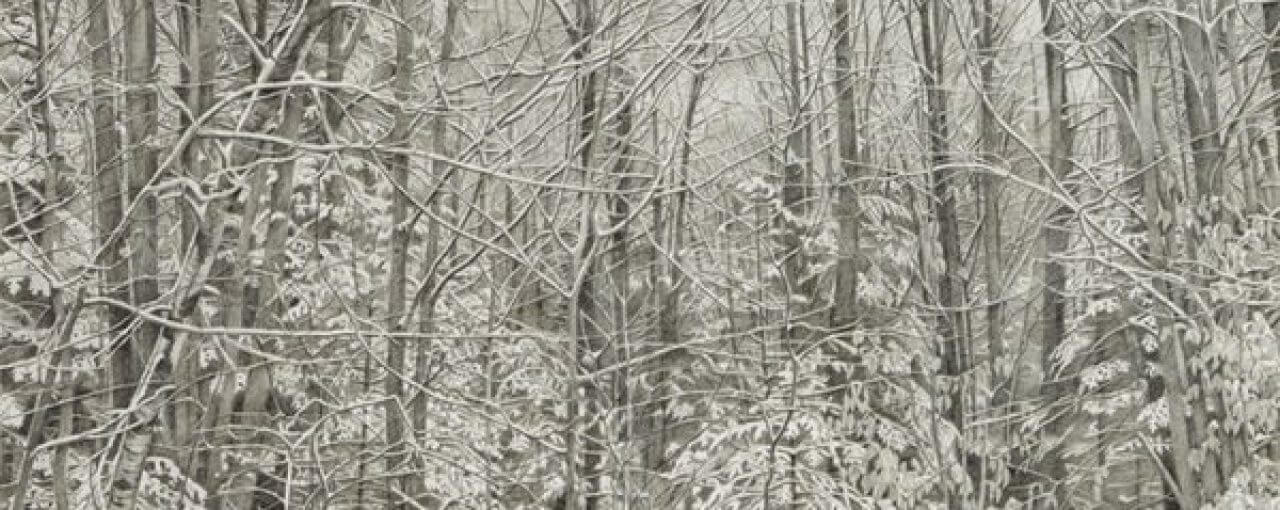Drawing and Toning with Eight Layers of Graphite
Interview by Jennifer Nelson, WTP Feature Writer
Mary Reilly’s art has been featured in solo exhibitions in New York City at Garvey/Simon Art Access and the Museum of the City of New York, as well as other galleries, and in numerous group exhibitions. Her work has been included in public collections at the Bronx Museum of the Arts and the New York Historical Society. Such publications as Flavorwire, Artsy.net, Les Femmes Folles, Artdaily and American Artist: Drawing have featured her drawings. She studied art at the State University of New York at Purchase. She also attended the School of Visual Arts, the Art Students League of New York, and the National Academy School of Fine Arts, all in Manhattan. After working as a graphic designer, Reilly chose a career in fine art.
Nelson: Why is graphite your medium of choice? What are its advantages and challenges?
Reilly: For me, the workmanship involved in using graphite pencil as my medium has been extremely gratifying. The tools that I use to create the intricate details and the subtle varying hues of graphite are both an advantage in enabling me to create work that feels sensual and moody. The subject I choose to draw in graphite must have a good amount of contrast, otherwise the final image will look tonally dull and muddy. I rely on images that provide some extremity in tonal value. Weaving the whitest of the lights, the darkest of the darks, and the varying shades in between, is essential in creating richness and depth in tone.
Nelson: Your drawings show a serene, solitary side to New York City, of trees and flowers in parks and forests in the five boroughs. How and why did you pick nature as your subject matter while living in the city?

Reilly: Nature has always had a profound effect on me, offering feelings of solitude that I cherish. While living in New York City, instinctively I sought out its natural areas and made them the subject for my artwork. After having discovered the natural beauty within the North Woods of Central Park, I was inspired to explore wooded areas of parks in the other four boroughs. Surprisingly, I found each park that I visited to be recognizably different in nature, each distinctively beautiful. There are ancient forests there with magnificent old trees, winding rivers, streams, and creeks. I found lakes, ponds, sprawling marshlands with its interesting flora and miles of sand dune–filled beaches. Through my drawings, I wanted to convey the emotional power of these serene, isolated locations that too few people get to see.
Nelson: Can you explain the techniques you use in “Flowering Hillside” and “Within the Forest,” works that, while perhaps as detailed as the photographic, are finally far more nuanced, with rich gradations of shadow and light?

Reilly: In “Flowering Hillside” and “Within the Forest,” my intention was to create a harmonious contrast between the intensely focused foreground image and its more gestural, muted background. To create this, I tone my white paper with up to eight layers of graphite, bringing the surface to a smooth middle tone. Next, I lay in the initial drawing. Progressively working from that middle tone outward toward the whitest of lights and the darkest of darks, I push the darks in with pencil and lift the lights with a kneaded eraser creating subtle shifts in tone. Once I have the value of my tones accurately laid in, I use sharp pencils and hard erasers, which I sharpen to a fine point in order to create the intricate details. I smooth all pencil strokes out with paper stumps, which gives the graphite a sensual, velvety feel. This additive and reductive process enables me to achieve richness and depth in tone and a mood in each piece.
Nelson: In your series Graffiti Trees, you memorialize tree carvings dating back to the 1930s, some from kids, others from lovers. Why did you feel it was important to document people’s presence in nature?

Reilly: My graffiti tree series was a bit of a departure from my previous work in that, for the first time, there was human intervention in my landscapes. When I discovered the acres of trees with humorous and romantic carvings on them in Alley Pond Park, Queens, I felt compelled to draw them. They were amusing and mysterious. These woods were alive with nostalgia and I felt a sentimental longing to know what the history behind the carvings might be. I would say that romancing the past was the inspiration for this series and what made it important for me to document the presence of people in nature.
Nelson: How did studying under such teachers as Frederick Brosen and Sharon Sprung impact your artwork?
Reilly: Sharon Sprung’s life drawing class was a turning point for me. We worked exclusively in charcoal, but I quickly abandoned it for graphite pencil, which afforded me greater detail in my work. I adopted Sharon’s technique of toning my white paper first before starting the drawing, bringing the surface to a middle tone then manipulating it with pencil, erasure, and other drawing tools. As I honed this technique, I knew that I had found a medium in which I could immerse myself in. However, I was still experimenting with subject matter. At this point I started taking a watercolor class with Frederick Brosen working independently in graphite. He brought to light the importance of letting my emotions guide me toward my subject matter, so I started using my love of nature as inspiration. His class was a supportive environment where I could really focus on developing my personal vision.
Nelson: What advice would you give new artists about choosing a subject matter and medium for their artwork?
Reilly: When looking for your subject matter, think about what feels personal and significant to you. Find images that you respond to emotionally and you will generate your most expressive and sincere work. Examine the workmanship involved in the different mediums when determining which one will best allow you to explore your vision.
Nelson: What skills did you learn as a graphic designer that have helped you as a full-time artist?
Reilly: More so than skills, it was the tools that I was introduced to as a graphic designer that have helped me as a full-time artist. Most importantly is the proportion wheel, which helps with the mathematics of sizing a photograph up or down if I want to use it as a guide in my drawing.
Nelson: How do you see your artwork evolving in the future?
Reilly: Since my move to northern Vermont from New York City six years ago, I have become immersed in nature and the magnitude of its ever-changing seasons. Images that I once traveled to find in New York City, I now stumble upon in my everyday life. Nature is so plentiful here and I find its constant transformation so enchanting. My most recent landscape drawings have been influenced by the extraordinary phenomenon of seasonal transformation. My new body of work has focused on growth, decay, and occurrences in nature.
See Mary Reilly’s work in WTP Vol. VI #5, courtesy of Garvey|Simon.
Copyright 2018 Woven Tale Press LLC. All Rights Reserved.

